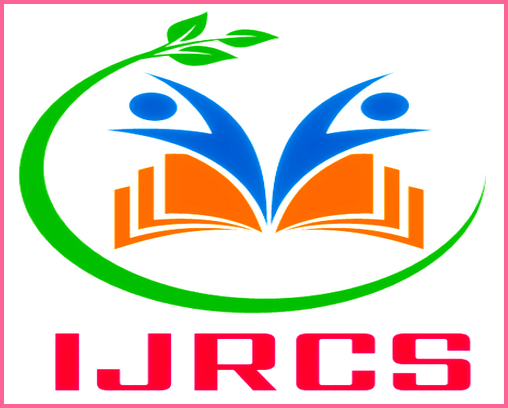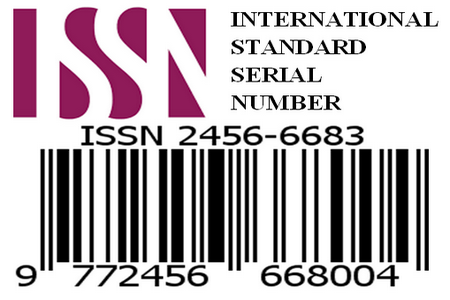The Psychological Dimensions of Rasa: An Exploration of Aesthetic Experience and Consciousness in Indian Aesthetics
Author(s): Dr Manvi Singh
Authors Affiliations:
Assistant Professor, Department of English, Sri Venkateswara College, University of Delhi, India
DOIs:10.2017/IJRCS/202503019 | Paper ID: IJRCS2025030019This study presents a comprehensive analysis into the psychological dimensions of Rasa, a fundamental concept in Indian aesthetics and literary theory. The paper synthesises classical Indian aesthetics, Yogic psychology, and contemporary neuroscience to elucidate the intricate nature of aesthetic experience. The paper traces the evolution of Rasa theory from its inception in Bharata Muni's Nāṭyaśāstra through the important works of scholars such as Ānandavardhana and Abhinavagupta, critically analysing their contributions to the understanding of cognitive and emotional processes inherent in aesthetic appreciation. Through an examination of the intersection between Rasa theory and Yogic psychology, with particular emphasis on the concept of citta-vṛttis (mental modifications), the study offers novel insights into the psychological mechanisms underlying aesthetic experiences. The research further scrutinises the four fundamental modifications of the mind—Vikāsa, Vistāra, Kṣobha, and Vikṣepa—and their correlations with specific Rasas, thereby providing a nuanced explication of the engagement between art and consciousness. The incorporation of recent neuroscientific findings facilitates an exploration of the neural correlates of aesthetic emotions, offering empirical substantiation for classical theories. This interdisciplinary approach not only validates ancient epistemologies but also demonstrates their relevance to contemporary discourse in psychology and cognitive science. The study considers the implications of Rasa theory for modern artistic praxis, art therapy, and cross-cultural aesthetics.
Dr. Manvi Singh(2025); The Psychological Dimensions of Rasa: An Exploration of Aesthetic Experience and Consciousness in Indian Aesthetics, International Journal of Research Culture Society, ISSN(O): 2456-6683, Volume – 9, Issue – 3., Pp.140-148. Available on – https://ijrcs.org/
- Abhinavagupta. (1992). Abhinavabhāratī on Nāṭyaśāstra. (G. H. Tarlekar, Trans.). New Delhi: Munshiram Manoharlal Publishers.
- Ānandavardhana. (n.d.). Dhvanyāloka. (Original work published c. the 9th century CE)
- Bharata Muni. (1950). Nāṭyaśāstra. (M. Ghosh, Trans.). Calcutta: Asiatic Society of Bengal. (Original work published c. two hundred BCE-two hundred CE)
- Bharata Muni. (1967). Nāṭyaśāstra. (M. Ghosh, Trans.). Calcutta: Granthalaya.
- Bhavabhūti. (1989). Uttararamacarita. (S. Rajan, Trans.). New Delhi: Sahitya Akademi.
- Bryant, E. F. (2009). The Yoga Sutras of Patanjali: A new edition, translation, and commentary. New York: North Point Press.
- Chatterjee, A. (2014). The Aesthetic Brain: How we Evolved to Desire Beauty and Enjoy Art. New York: Oxford University Press.
- Chatterjee, A., & Vartanian, O. (2016). Neuroscience of aesthetics. Annals of the New York Academy of Sciences, 1369(1), 172-194.
- Csikszentmihalyi, M. (1990). Flow: The psychology of optimal experience. New York: Harper & Row.
- De, S. K. (1963). Sanskrit Poetics as a Study of Aesthetic. Berkeley: University of California Press.
- Dhanañjaya. (2008). Daśarūpaka. (E. P. Miller, Trans.). New Delhi: Parimal Publications.
- Dietrich, A. (2004). Neurocognitive Mechanisms underlying the Experience of Flow. Consciousness and Cognition, 13(4), 746-761.
- Gerow, E. (1994). Abhinavagupta’s aesthetics as a speculative paradigm. Journal of the American Oriental Society, 114(2), 186-208.
- Ghosh, M. (1951). The Nāṭyaśāstra: A Treatise on Hindu Dramaturgy and Histrionics Ascribed to Bharata Muni. Calcutta: Royal Asiatic Society of Bengal.
- Gnoli, R. (1956). The Aesthetic Experience According to Abhinavagupta. Rome: Istituto Italiano per il Medio ed Estremo Oriente.
- Gnoli, R. (1968). The Aesthetic Experience According to Abhinavagupta (2nd ed.). Varanasi: Chowkhamba Sanskrit Series Office.
- Hiriyanna, M. (1997). The Essentials of Indian Philosophy. Delhi: Motilal Banarsidass.
- Iacoboni, M. (2009). Imitation, Empathy, And Mirror Neurons. Annual Review of Psychology, 60, 653-670.
- Ingalls, D.H.H. (1968). The Dhvanyāloka of Ānandavardhana with the Locana of Abhinavagupta. Harvard Oriental Series, 49.
- Ingalls, D.H.H., Masson, J.M., & Patwardhan, M.V. (1990). The Dhvanyāloka of Ānandavardhana with the Locana of Abhinavagupta. Cambridge, MA: Harvard University Press.
- Kalidasa. (2005). Abhijñānaśākuntalam. (C. R. Devadhar, Ed.). Delhi: Motilal Banarsidass.
- Kosslyn, S. M., Ganis, G., & Thompson, W. L. (2001). Neural Foundations Of Imagery. Nature Reviews Neuroscience, 2(9), 635-642.
- Masson, J.L., & Patwardhan, M.V. (1970). Aesthetic Rapture: The Rasādhyāya of the Nāṭyaśāstra. Poona: Deccan College.
- Pandey, K.C. (1956). Comparative Aesthetics (Vol. 1): Indian Aesthetics. Varanasi: Chowkhamba Sanskrit Series Office.
- Patañjali. (2012). The Yoga Sutras of Patanjali. (E. Bryant, Trans.). New York: North Point Press.
- Pollock, S. (2016). A Rasa Reader: Classical Indian Aesthetics. New York: Columbia University Press.
- Raghavan, V. (1976). The Number of Rasas. Madras: Adyar Library and Research Centre.
- Sharma, R. (1997). Aesthetic of Bhoja. Varanasi: Chaukhambha Orientalia.
- Vartanian, O., & Skov, M. (2014). Neural Correlates Of Viewing Paintings: Evidence From A Quantitative Meta-Analysis Of Functional Magnetic Resonance Imaging Data. Brain and Cognition, 87, 52-56.
- Vatsyayan, K. (1968). Classical Indian Dance In Literature and the Arts. New Delhi: Sangeet Natak Akademi.




